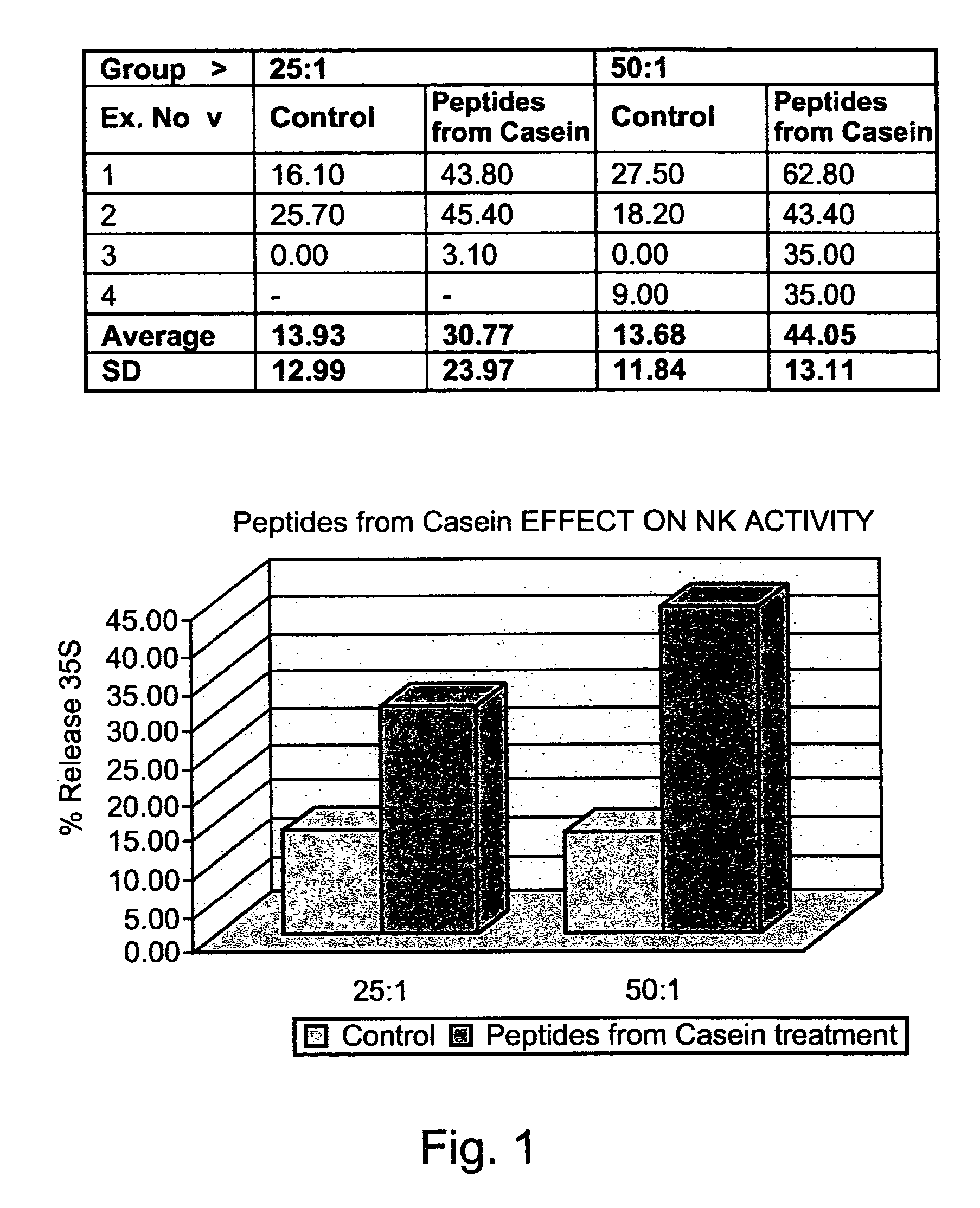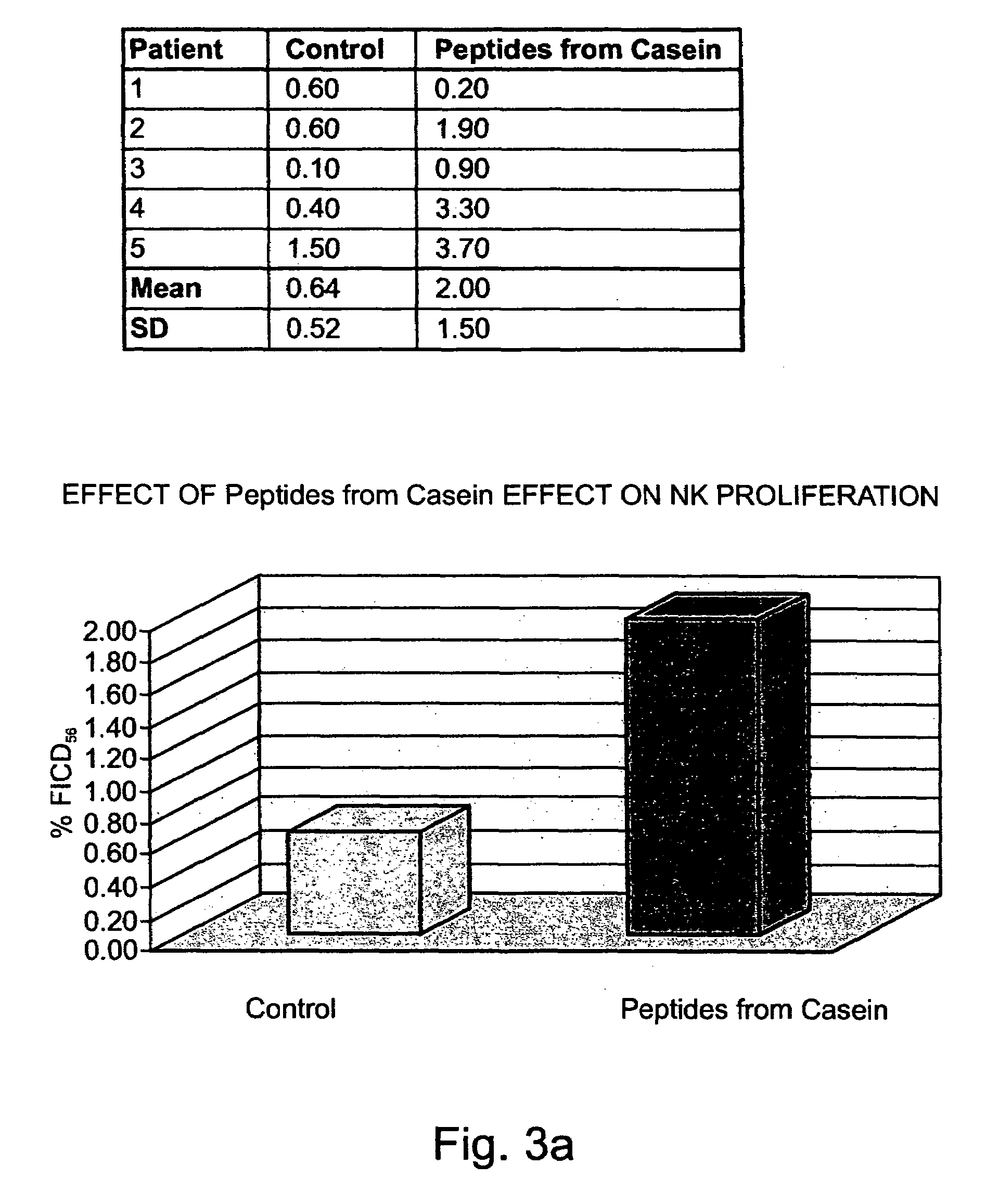Casein derived peptides and uses thereof
a peptide and peptide technology, applied in the field of biologically active peptides, can solve the problems of lack of identity verification, no biological activity investigation, and questionable author's purification to homogeneity claims
- Summary
- Abstract
- Description
- Claims
- Application Information
AI Technical Summary
Benefits of technology
Problems solved by technology
Method used
Image
Examples
examples
[0289]Reference is now made to the following examples, which together with the above descriptions, illustrate the invention in a non limiting fashion.
Materials and Experimental Methods
[0290]Preparation of peptides derived from natural casein: The casein fraction of cow's milk was isolated as described by Hipp et al. (1952), ibid., or provided as commercial casein, and subjected to exhaustive proteolytic digestion with chymosin (also known as rennin) (20 ng per ml) at 30° C. Upon completion of the reaction, the solution was heated to inactivate the enzyme, and the digest was precipitated as paracaseinate by acidification with an organic acid, acetic or trichloracetic acid. Paracaseinate was separated by centrifugation, and the supernatant fraction, containing the peptide fragments of interest, was re-precipitated as caseicidin by higher acid concentrations. The resulting caseicidin, following re-suspension, dialysis and neutralization was lyophilized. The resulting powdered preparati...
PUM
 Login to View More
Login to View More Abstract
Description
Claims
Application Information
 Login to View More
Login to View More - R&D
- Intellectual Property
- Life Sciences
- Materials
- Tech Scout
- Unparalleled Data Quality
- Higher Quality Content
- 60% Fewer Hallucinations
Browse by: Latest US Patents, China's latest patents, Technical Efficacy Thesaurus, Application Domain, Technology Topic, Popular Technical Reports.
© 2025 PatSnap. All rights reserved.Legal|Privacy policy|Modern Slavery Act Transparency Statement|Sitemap|About US| Contact US: help@patsnap.com



